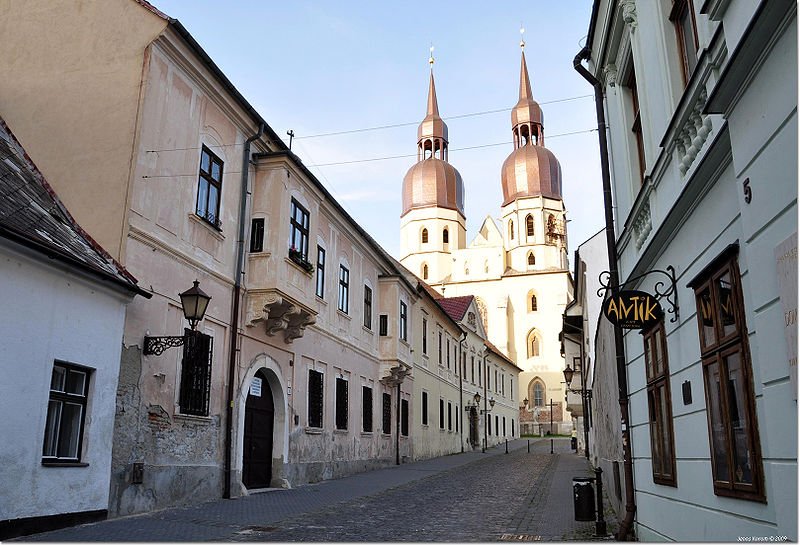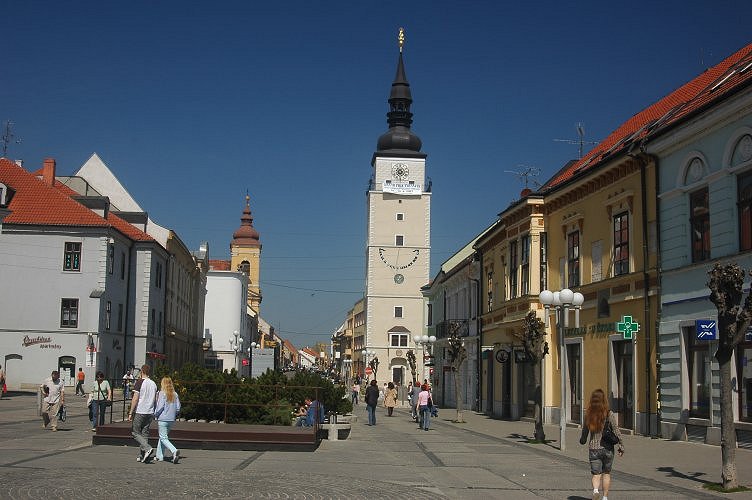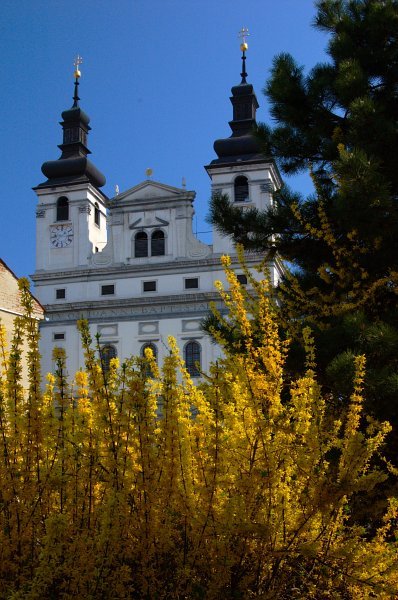Trnava is a city on the Trnávka river in western Slovakia. Located 47 km to the northeast of Bratislava, it covers 71.5 sq km (27.62 sq mi) and has a population of 70,000 people (2011 estimate).
 Trnava, Slovakia
Trnava, SlovakiaSource: https://commons.wikimedia.org/wiki/File:Trnava_(30).jpg
Author: Janos Korom Dr.

Trnava is one of the oldest towns in Slovakia. It is situated in an area that has seen permanent settlement going back to the Neolithic period. The city is at the crossroad of trade routes running from the Mediterranean to Poland and from Bohemia to Hungary. The earliest mention of Trnava was in 1211. It receives its town charter in 1238.
As with many other cities in Slovakia, Trnava received an influx of German settlers in the 13th century. This was at the invitation of the King of Hungary, and the arrival of Germans increased after the Mongol invasion of 1242 which depopulated the area.
 Street in Trnava
Street in TrnavaSource: https://commons.wikimedia.org/wiki/File:Trnava_trojicne_namestie.jpg
Author: Stanislav Doronenko

In the 16th century, Trnava faced another threat, from the Ottomans. At that time, it was made the headquarters of the Church of Hungary. It was the center of the Counter-Reformation of the 16th and 17th century, which saw a Catholic revival, in response to the earlier Protestant Reformation.
Trnava had a sizable Jewish population until the Second World War, when it was decimated by the Nazis. It was the most industrialized city in Slovakia, and today continues to play an important role as a center for car manufacturing and other industries.
Visiting Trnava
You can reach Trnava by train from Bratislava and Košice. It is just about half an hour by train from the Slovak capital. There are also bus services between the two cities. It takes about 50 minutes to reach Trnava by bus. Cathedral of St John the Baptist, Trnava
Cathedral of St John the Baptist, TrnavaSource: https://commons.wikimedia.org/wiki/File:Trnava_john_the_baptist_03.jpg
Author: Doronenko

Places of Interest in Trnava
- Cathedral of St Nicholas
A landmark church with its twin towers topped by bell-shape cupolas. Dating back to 1380, it was given its present shape in 1676. - Church of St Helen
Built in the 14th century, this is the oldest church in Trnava. - Church of the Assumption of the Virgin Mary (Nanebovzatia Panny Márie)
13th century aisleless church building built for the nuns of the Order of the Poor Clares. - Holy Trinity Square (Trojičné námestie)
The main square of Trnava today. There are a number of attractions here including the Plague Column, the Municipal Theater and the Holy Trinity Church. - Museum of West Slovakia
This is one of the biggest museums in Slovakia. Housed in the 13th century convent next to the Church of the Assumption of the Virgin Mary, it exhibits artifacts ranging from archaeological discoveries to religious art. - Music Museum
Museum occupying the home of Trnava's most famous composer, Mikulas Schneider Trnavský. Today it displays objects related to musicians in Slovakia. - St Nicholas Square
The main square of Trnava during medieval times. Among the sights here is the Baroque column of St Joseph and the Archbishop's Palace. - Synagogue
The synagogue of Trnava dates back to the 19th century. It was designed in the Byzantine-Moorish style by Viennese architect Jakub Gartner. A black marble monument in front of it commemorates the Jews of Trnava who were murdered during the Second World War. - University Church of St John the Baptist
This is the first monumental Baroque building in Slovakia, and remains one of the biggest religious structures in the country. Built in 1629, it was intended as the church for the university run by the Jesuits. However the university relocated to Buda in 1777, and it became a local parish church.
 Latest updates on Penang Travel Tips
Latest updates on Penang Travel Tips

Copyright © 2003-2025 Timothy Tye. All Rights Reserved.

 Go Back
Go Back